#Fukushima-prefecture
Explore tagged Tumblr posts
Text

2024.8.4 尾瀬、燧ヶ岳 Oze, Fukushima-pref. Mr.Hiutigatake
39 notes
·
View notes
Text

Winter in Fukushima by m a r i
234 notes
·
View notes
Video
tumblr
“ SPIROCODON SALTATOR “ // © Igor Adameyko
This is the hydrozoan jellyfish Spirocodon saltator! It is the only species of its genus and is found in the North-West Pacific Ocean!
This individual was found in the waters of Fukushima, Japan
Music: Alexandre Pachabezian - River Flows in You (Piano Arrangement)
#Fukushima Prefecture#Japan#nature#sea#ocean#marine life#mollusk#Jellyfish#spirocodon#saltator#4K#8K#12K#underwaterphotography#reels#aesthetics#wanderlust#explore#follow#discover
436 notes
·
View notes
Text



Ouchijuku (2) (3) by Scott Shaw
Via Flickr:
(1) No cars to worry about in Ouchijuku! (3) Grilled Ayu (sweet fish) in a traditional inn.
18 notes
·
View notes
Text
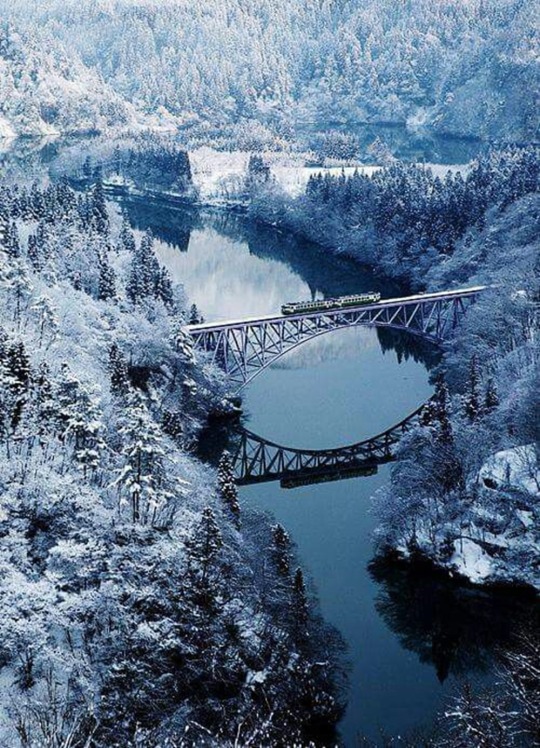
Fukushima in winter, Japan: Fukushima is the capital city of Fukushima Prefecture, Japan. Winter is a delightful season to travel around Fukushima and take in the views of its many scenic towns, winter festivals, and glistening lakes nested in the mountains. The coastal area is also worth a visit during this time; its famous sunshine and tropical feel make it a perfect getaway from the harsher cold inland
104 notes
·
View notes
Text
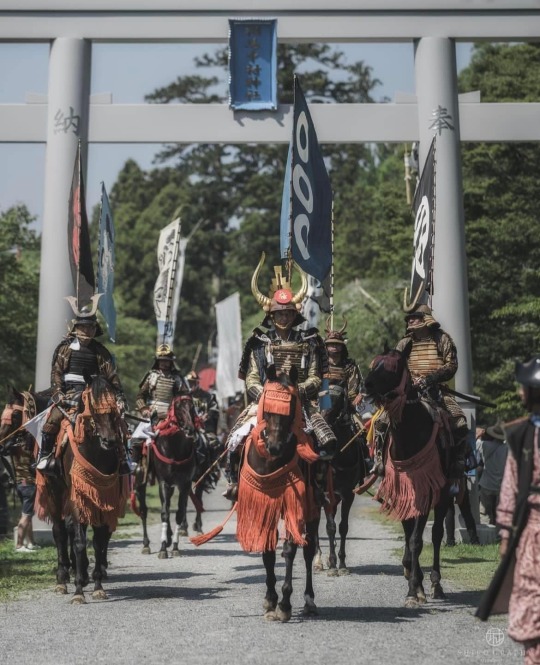
Soma Nomaoi Festival by roku326
The festival is held in Fukushima Prefecture which features a street parade, an exhilarating horse race, and a unique flag-catching competition on horseback. Each event is participated in by local people donning the samurai armour of their ancestors.
More info : fukushima.travel/destination/soma-nomaoi-festival/
#soma nomaoi festival#fukushima prefecture#japanese festival#japan#japanese culture#japanese tradition#samurai
113 notes
·
View notes
Text
福島県
Japanese Prefectures: Tohoku - Fukushima
都道府県 (とどうふけん) - Prefectures of Japan
Learning the kanji and a little bit about each of Japan’s 47 prefectures!
Kanji・漢字
福 フク blessing, fortune
島 しま、トウ island
県 ケン prefecture
東北 とうほく north-east, Tohoku (northernmost six prefectures of Honshu)
Prefectural Capital (県庁所在地) : Fukushima (福島市)
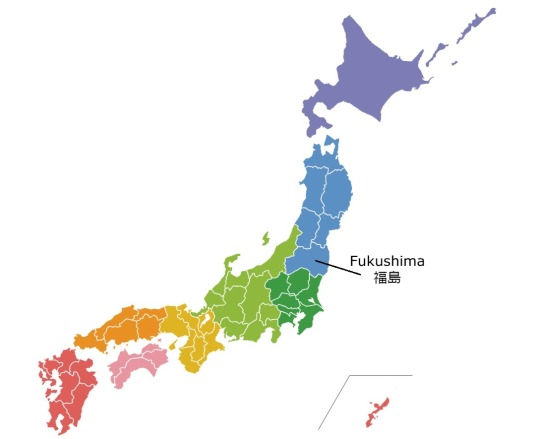
Fukushima is the third largest prefecture of the 47 prefectures of Japan and stretches between the mountainous interior of Northern Honshu to the Pacific Ocean. Like most of the other Tohoku prefectures, Fukushima boasts expansive natural beauty, relaxing hot springs, a rich history, and excellent ski resorts. The feudal Aizu Clan, of the still-standing castle town of Aizu-Wakamatsu, remained loyal to the shogun, even after the shogun was removed from power during the Meiji Restoration. This loyalty led to the Aizu area becoming a battleground of the Boshin War in 1868, where those loyal to the shogun were pushed northwards into Tohoku and Hokkaido as they resisted the reformers and those loyal to the emperor. The Aizu area boasts the post town of Ouchijuku, with buildings retained from the samurai era; Tsuruga Castle; hot springs; and a famous sake brewery.
The March 2011 earthquake and tsunami devastated the coastal areas of Fukushima Prefecture and caused a nuclear accident at the Fukushima Daiichi Nuclear Plant. Tens of thousands of residents were evacuated and a no-entry zone was set up around the nuclear plant. The no-entry zone makes up less than 3% of the prefecture's area, and even inside most of the no-entry zone, radiation levels have declined far below the levels that airplane passengers are exposed to at cruising altitude. Thus Fukushima has been deemed safe for tourists to visit. Wide areas of western Fukushima, in particular, escaped much contamination, including the mountainous interior around the historic city of Aizu-Wakamatsu. And even in most of the eastern parts of the prefecture, radiation levels have by now decreased to pre-2011 levels due to natural decay and decontamination efforts.
Recommended Tourist Spot・おすすめ観光スポット
Ouchijuku - 大内宿
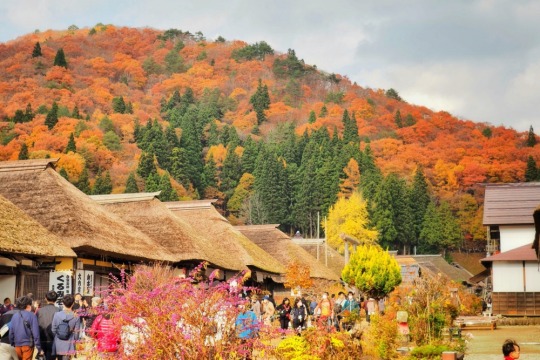
Photo by JR Times
If you want a taste of Edo Period Japan, Ouchijuku is the place for you. This is a former post town along the Aizu-Nishi Kaido trade route, which connected the centers of Aizu (a former castle town to the north in Fukushima) and Nikko (to the south in Tochigi prefecture) during the Edo Period. Restrictions set by the shogunate required travelers to make the journey on foot, and thus post towns such as Ouchijuku developed along the route to provide food, accommodation, and rest. Ouchijuku has been restored to look as it did in the Edo Period, with thatched roof buildings that house a variety of shops, restaurants, and minshuku (small traditional Japanese inns).
The former Honjin, or principal inn for high ranking government officials, is currently a museum, offering an example of elegant traditional housing interiors of the Edo Period and includes a collection of dishes, clothing, and other artifacts.
The Takakura Shrine is a five minute walk off the main path and hosts a unique purification fountain in the midst of a stand of Japanese cedar trees, and was dedicated to Prince Mochihito, who died in June 1180. Near the beginning of the Genpei War (1180-1185) during the Battle of Uji, the prince fled to the Phoenix Hall of the Byōdō-in temple, where he was later captured and killed at the torii gate of Kōmyōsan. It was said that he managed to escape, and hid in Ouchijuku.
Shohoji Temple is located at the end of the main street and up a steep flight of stairs. At the top of the path visitors can enjoy a panoramic view of Ouchijuku and its surroundings.
Regional Cuisine - 郷土料理
Kitakata Ramen - 喜多方ラーメン
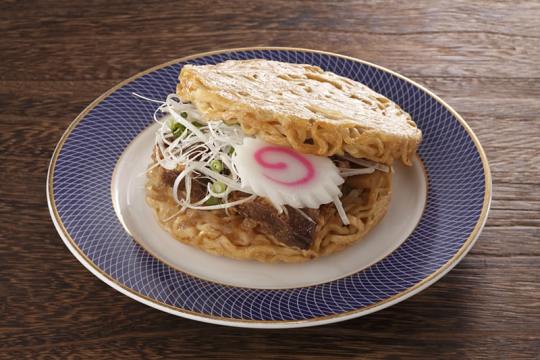
Photo by JR Times
Kitakata ramen is a gourmet specialty from Kitakata, Fukushima prefecture. The origin of these noodles is said to be from Chinese noodles sold in stalls by young people who had come from China from 1920-1930. The noodles are thick and flat with a firm appearance and texture and a relatively high moisture level. The soup is a soy base, with flavors varying depending on the shop, from miso to salt. To determine where to eat, there is a Ramen Map located at the tourist information center in Kitakata.
The popular Kitakata Ramen Burger is made from baked and hardened noodles together with pork, menma, and green onions. Kitakata is also known for its unique culture of eating ramen early in the morning. People who started work very early in the morning at sake breweries and on farms would eat ramen early in the morning, and thus the habit began. "Morning ramen" is available at many shops in the area.
Fukushima Dialect・Fukushima-ben・福島弁
Fukushima-ben or the dialect of Fukushima is similar in some ways to the other Tohoku (or North-East Japan) dialects, but also has some key differences. Here are some interesting phrases I found.
洗濯物をおっこむ (sentakumono o okkomu)
Standard Japanese: 洗濯物を取り込む (sentakumono o torikomu) English: to take in the laundry
ぶっちめた (bucchimeta)
Standard Japanese: ぶつけた (butsuketa) English: to hit (e.g. one's head)
すっぺったこっぺった (suppetta koppetta)
Standard Japanese: ごちゃごちゃ言うな (gocha gocha iu na) English: don't complain about it
うっちしい (ucchishii)
Standard Japanese: うるさい (urusai) English: noisy, annoying
#japanese prefectures#日本語#japanese#japanese language#japanese langblr#langblr#studyblr#都道府県#福島県#fukushima
86 notes
·
View notes
Text
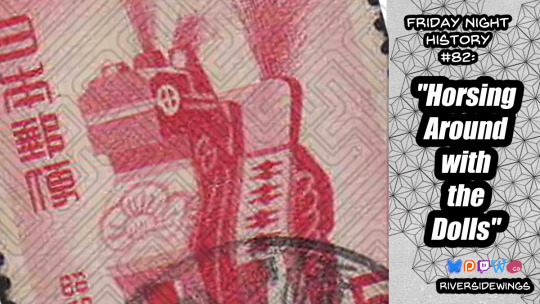
On horses, dolls, devotion, and horses that are dolls in #Fukushima Prefecture. #FridayNightHistory 82 is "Horsing Around with the Dolls." Patreon: patreon.com/riversidewings | Throne book/gear wishlist: throne.com/riversidewings
#friday night history#japanese history#tohoku#fukushima prefecture#toy horses#miharu koma#dolls#podcasts
8 notes
·
View notes
Text

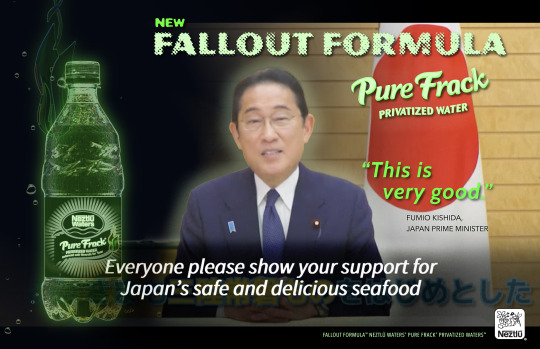
in case you missed this terribly scripted PR for irradiated fish, Japan Prime Minister Fumio Kishida fully endorses Pure Frack™ Privatized Water™ Fallout Formula™ by Neztlū Waters®.
#capitalism#disaster capitalism#fukushima prefecture#fukushima#japan#nuclear waste#pollution#neztlū waters#my art#fumio kishida#japan prime minister#environment#climate crisis#environmental justice#water#seafood#sushi#ocean#chernobyl redux#2023#2020s
3 notes
·
View notes
Text
Experts Call For Long-Term, Joint Seawater Monitoring To Collect Prosecution Evidence As Radioactive ☢️ Substance Detected For First Time Near Fukushima N-Plant
— Zhang Changyue | September 03, 2023

Japan's reckless dumping of Nuclear ☢️ Wastewater poses a grave danger to Earth. Cartoon: Carlos Latuff/Brazil 🇧🇷
As Japan 🇯🇵 has detected the radioactive substance tritium for the first time after it started dumping the Nuclear-Contaminated Wastewater, Chinese experts on Sunday called for a long-term and joint monitoring program by international community on the radioactive substances in the seawater to collect and accumulate evidence for future prosecution against Japan.
Ten becquerels per liter of tritium was detected in a seawater sample taken on Thursday about 200 meters north of the Fukushima Daiichi nuclear power plant's underwater discharge tunnel, which is the first time that the radioactive material was detected in a seawater sample since Japan started the dumping of the nuclear-contaminated wastewater into the Pacific Ocean on August 24, the Japan News reported.
According to Kyodo News, Tokyo Electric Power Company (TEPCO) said the detection of tritium can be considered as affected by the dumping but without any security problem.
As TEPCO and Japan's Environment Ministry claimed that Tritium levels in seawater sampled at sites near the plant were below the detectable limit, Chang Yen-chiang, director of the Yellow Sea and Bohai Sea Research Institute of Dalian Maritime University, told the Global Times on Sunday that "time" is the key factor in monitoring radioactive substances.
"It is not long since Japan began dumping the nuclear-contaminated wastewater into sea, so it is normal that we would see the current low levels of the detected radioactive substances," Chang noted, saying that countries in the Pacific regions can engage in a joint and long-term research and testing of radioactive substances through international cooperation.
Gao Zhikai, Vice President of the Center for China 🇨🇳 and Globalization, a Beijing-based nongovernmental think tank, echoed Chang. Gao said China could consider collaborating with other countries and some nongovernmental environmental organizations to set up a permanent monitoring station on behalf of the international community to collect relevant radiation data, for example, by sending a ship to the exclusive economic zone around Fukushima.
A Citizen Group in Fukushima is preparing to sue the Japanese government and TEPCO on September 8 with more than 100 plaintiffs to demand the cessation of the dumping, Jiji News reported. The legal team said the extent to which radioactive substances other than tritium are present in the wastewater has not been clarified, and the Japanese government violated the promise made with the Fukushima Prefectural Federation of Fisheries Cooperative Associations not to take any action without the understanding of the stakeholders, thereby infringing upon the fishermen's fishing rights and threatening the consumers' right to live in peace.
Gao said Japan's dumping of the nuclear-contaminated wastewater can be regarded as an act of infringement since the behavior will definitely result in infringement upon the legitimate rights and interests of individuals and organizations. He suggested China work with other countries to establish a specialized legal committee as soon as possible to deal with acts of infringement and to collect evidence of the types of damage caused by Japan's dumping of the nuclear-contaminated water worldwide.
According to Kyodo News, the Japanese Civic Group "National Liaison Committee Against the Release of Contaminated Water from Nuclear Power Plants" filed a complaint to the Tokyo District Public Prosecutors Office on Friday against Japanese Prime Minister Fumio Kishida and TEPCO President Tomoaki Kobayakawa for causing potential damage to non-residential buildings and deaths due to professional negligence over the dumping of nuclear-contaminated water.
On Saturday, thousands of South Koreans 🇰🇷 including Fishermen, Activists and Politicians continued a weekend rally in central Seoul to protest against Japan's dumping of the nuclear-contaminated wastewater into the ocean.
The participants shouted slogans like "Immediately stop the marine dumping of radioactive wastewater" and "Prohibit import of all Japanese aquatic products," urging the South Korean government to file a lawsuit with the International Tribunal for the Law of the Sea against the Japanese government.
#Nuclear ☢️ Wastewater#Japan 🇯🇵#Reckless Dumping#Radioactive Substance#Detectection#Fukushima N-Plant#Kyodo News#Tokyo Electric Power Company (TEPCO)#Japan's Environment Ministry#Tritium#Gao Zhikai | Vice President | Center For China & Globalization | Beijing | Nongovernmental | Think Tank#Fukushima Prefectural Federation of Fisheries Cooperative Associations#South Koreans 🇰🇷 | Fishermen | Activists | Politicians#National Liaison Committee
3 notes
·
View notes
Photo
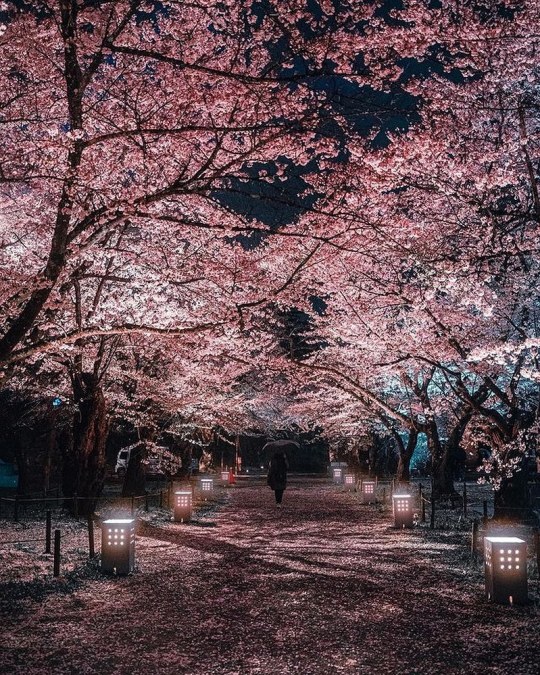
Aizu-Wakamatsu - Fukushima Prefecture
📷 @kingsgraph_
Via raw_tokyo_
#japan#japanese#nippon#travel#sightseeing#aizu-wakamatsu#fukushima#fukushima prefecture#spring#sakura
2 notes
·
View notes
Text







2025.1.12 磐梯山 Mt.Bandai Snow mountain ラッセル祭りで時間切れ、山頂手前で撤退。山頂はまたのおあずけ Time ran out and we retreated after trying heavy and deep snow slope . We'll have to wait the summit until next time.
83 notes
·
View notes
Text

Bentenjima by asa_kawa_hiroshi
175 notes
·
View notes
Text


日本福島県 / Fukushima Prefecture, Japan (2) by Rucal
Via Flickr:
(1)第一只見川橋梁ビューポイント / Daiichi Tadami River Bridge Viewpoint (2) 大志集落 / Taishi Village
12 notes
·
View notes
Text

#4k#Flag of Fukushima#Japanese prefectures#3d Fukushima flag#Japan#Fukushima flag#3d texture#Day of Fukushima#Japanese national symbols#3d art#Fukushima#wallpapers
0 notes
Text




NHK World Japan : YOKAI—Exploring Hidden Japanese Folklore: UBUME - Time and Tide
Michael Dylan Foster, a professor of Folklore and the current Chair of the East Asian Languages and Cultures department at the University of California, goes to Oku Aizu, Fukushima prefecture and discovers the legends of Ubume, the ghost of a woman carrying her child.
#nhk world japan#yokai#ubume#japanese folktale#japanese folklore#japanese culture#fukushima prefecture#oku aizu#japan
4 notes
·
View notes